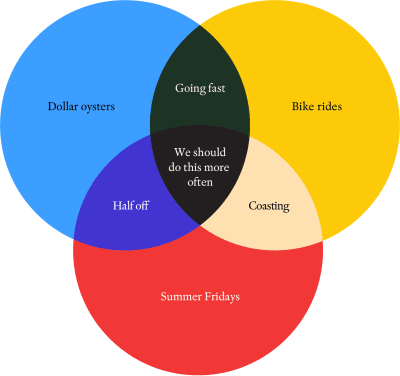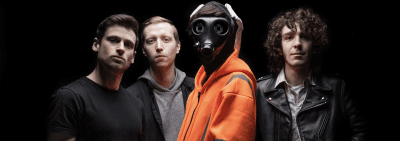Courtesy Sony Pictures
Watch: ‘Ghostbusters’ puts Coney Island on ice
'Ghostbusters: Frozen Empire' director Gil Kenan discusses carrying on the legacy of a beloved franchise
Filmmaker Gil Kenan will never forget the hottest day he experienced in Manhattan. The temperature was in the triple digits, and he was riding into the city from New Jersey.
“Parents were stripping clothes off their children on the train,” says Kenan. For him, though, it was an ah-ha moment.
Kenan is the director of “Ghostbusters: Frozen Empire,” the newest “Ghostbusters” installment, which he co-wrote with “Ghostbusters: Afterlife” director Jason Reitman, son of the director Ivan Reitman, who helmed the original two “Ghostbusters” movies. The elder Reitman passed away in 2022, but not before giving “Frozen Empire” his stamp of approval.
When Kenan and Jason Reitman were considering where in New York their new arctic baddie Garraka should unleash his icy wrath — a chill that freezes victims with fear from the inside out — they decided that setting the story at the height of summer allowed for the greatest possible dramatic contrast. So, naturally, they went with Coney Island. (Step aside, Polar Bear Club.)
“Ghostbusters: Frozen Empire” picks up where 2021’s “Afterlife” left off: Egon Spengler’s family returns to where it all started, at the iconic New York City firehouse Hook & Ladder Company 8, to team up with the original Ghostbusters and save the world from a second Ice Age.
Brooklyn Magazine spoke with Gil Kenan about bringing the storied franchise back to New York City after 35 years.
Why did you decide to freeze Coney Island?
I happened to be in Manhattan on its hottest recorded day. It was 114 in the middle of the day and it was a day I’ll never forget. Like, parents were stripping clothes off their children on the train coming over from New Jersey into the city. So I was able to channel that sort of intense urban heat that the boroughs can get.
When thinking about where our new villain Garraka should unleash his death, and setting the film at the height of summer in the city, [it] allowed us to create the greatest possible dramatic contrast. So of course, Coney Island immediately came to mind. It’s part of the city, but it’s obviously a classic American beach environment. It has all the hallmarks of a grand day out on a hot day. And to use that as the front line for this freezing attack on the city just felt natural.
The original “Ghostbusters” stole shots all over the city. Did you go rogue and do any unplanned filming?
I actually did steal a shot in Brooklyn. Late in the process, I really wanted to get one more establishing shot of the city, so I just took a camera out to Brooklyn and shot it totally run-and-gun. But for everything else, we were really lucky that we made this movie with a city administration that happened to be “Ghostbusters” fans.
It’s amazing, the power of “Ghostbusters” to open doors, because so many people like myself grew up with these films and hold them in a special place in their hearts. We received permission right from the beginning to shoot across the city. Including in our conversations with the New York Public Library, who are obviously very protective of their lions, Patience and Fortitude. Down to the mayor’s office, who had to give us clearances for some of the insane Ecto-1 chase scenes early in the film with the Hell’s Kitchen sewer dragon. That stuff was all shot in the city.
Is filming outdoors in New York an obstacle? Anyone can record you and spoil a scene before the movie comes out.
One of the cool things about “Ghostbusters” is there is a little bit of rawness. If you watch the ’84 film, watch the ’89 film, when the guys are running down the street, a lot of times pedestrians will turn their heads and see the camera, sometimes wave. [Laughs.] Those moments weirdly add authenticity to the thing. So I kept it in anytime people on the sidewalks took out their phones and filmed Ecto-1 racing by. When you watch the film again, you’ll see people gawking on the margins of the frame. I actually think that stuff’s kind of cool. It feels like, yeah, this is the stuff you get when you shoot in a real city. You can’t sanitize and control every aspect of the experience. What would you do if you saw something crazy happening on the street? Like a sewer dragon being chased by a ghost-busting mobile? You take your phone out and you shoot some video of it. So I feel like this is the world we live in.
“Frozen Empire” opens with Robert Frost’s poem “Fire and Ice.” Why did you frame the movie with a poem?
I have to say that that was not something I had planned originally for this film. We did not have it in our script. The very first time we played the movie for the studio, Tom Rothman, the president of Columbia Pictures, came up to us and suggested that we should look up the poem “Fire and Ice.” I read it in school and kind of remembered, but when I pulled it up and put it up in front of the film, it was just incredible what it did for activating, not just the thematic or more literal plot strands of the film, but the way that it gave a deeper grounding to some of the forces of good and evil in the story. It felt very Ghostbusters to invoke that cataclysmic, almost Biblical allegory. So it was a suggestion that spoke to a higher art and was an instant yes the first time I tried it in the movie.
Logan Kim is the movie’s MVP for me. He steals every scene he’s in.
Logan is the secret spice of this new round of films. We were blown away by Logan’s onscreen confidence that just oozes out of every pore. He appeared fully formed when we cast him in “Ghostbusters: Afterlife” and his chemistry with Mckenna [Grace] was immediate. It made perfect sense that he would be a summer intern with Ray at Ray’s Occult Books. That also primed Ray Stantz to be right in the middle of the action, but just outside of strapping on a proton pack at the start of the story. I loved the chemistry that Dan Akroyd and Logan Kim showed in their brief moments at the end of “Afterlife,” and we got to really develop that relationship in this film.
In “Afterlife,” you introduced Egon Spengler as the franchise’s first totally benevolent ghost. In “Frozen Empire,” the ghost Melody (Emily Alyn Lind) isn’t totally good or evil, which makes her character incredibly human. Will you talk about adding more complex ghosts to “Ghostbusters”?
I take great pride in the ability of this film in particular, but actually of “Ghostbusters,” to show a diverse range of ghosts. One of the gifts of the first “Ghostbusters” film is that there is not one particular species that typifies what a ghost is. You can have either Slimer or the librarian ghost, and those visually and in mannerisms come from vastly different corners of the supernatural spectrum, but they coexist happily in the “Ghostbusters” world. I took that as a jumping-off point and inspiration to create a pretty wide ecosystem of supernatural spirits in this film.
I love ghosts as characters. Most of my movies have ghosts in one way or another. And that’s because I love and respect the concept of a ghost as a dramatic entity. And I think that ghosts represent the potential for pure soul, not in a kind of trite way, but as something that is connected directly to the bass note of life. There is something really poignant about a character like Phoebe who showed us a tremendous sensitivity to the other side in a way that she didn’t expect in “Afterlife” with her relationship with her grandfather, Egon Spengler. She’s also open to the approach by a very human, very grounded ghost in Melody. The relationship with that spirit begins an arc that will force Phoebe to confront obstacles that are going to threaten everything she cares about and will force her to grow as a Ghostbuster and as a young woman.
Like Egon before her, Phoebe exhibits some traits of people on the spectrum, but it’s not something you spell out for the audience. Is that intentional? And if so, how did you create an authentic autistic teenage character in “Frozen Empire”?
A lot of that work was done by Mckenna and Jason for “Afterlife.” At this point, I trust and respect the performers who are bringing these legacy characters to life. To understand the parameters, both of their characters’ points of view, their worldview, and the way they communicate. Phoebe has a pragmatic mind like her grandfather. She has a unique way of expressing her emotions and her access to the people around her. Those were defined by Mckenna in an incredible young performance in “Afterlife.” The level of care and sensitivity that Mckenna shows to Phoebe, the way she advocates for the character is so heartening as a filmmaker because you want to work with actors who fiercely protect the integrity of their characters. It makes the process so much richer because it feels like you can have conversations about a character arc rather than giving rote direction. The amount of intelligence and thought that goes into that performance is really humbling.
There are a few undefined relationships in the movie. The Spengler family is finding out who they are to each other in New York City. Phoebe is figuring herself out and she develops an undefined relationship with a ghost (Melody). They like each other but it isn’t clear to me if it’s as friends or girlfriends.
We’re talking about a relationship between a human and a ghost primarily. That is the core distinction that defines Phoebe and Melody. There is an obstacle to entry that is greater than anything like gender or class or language. You can’t get much further apart than existing on different dimensional planes, and so that was what was dramatically compelling. That defined, more than anything, the approach of how to craft an arc between these two characters, where clearly there is a pull towards one another. Both are searching. Both are in need of finding a way to fulfill something that is unresolved. And in ways big and small, they find a kinship that allows both of them to develop and grow. That was the primary driver. I’m really proud of a nuanced human-ghost relationship in a film, irrespective of the normal dynamics that define adolescent relationships in films.
Who voices the new villain Garraka?
[Kenan points to himself.]
You’re Garraka? Amazing. How did you create the character?
[Laughs.] It came through drawing. As I’m writing with Jason, I’m usually off to the side with a piece of paper. During the early writing process, I drew this silhouette for Garraka that had a connection to this nightmarish imagery that I had earlier in my life, inspired by old German fables that my grandfather would read me, or the creatures that Ray Harryhausen brought to life in films like “The 7th Voyage of Sinbad.” These creatures with tactile, uncomfortable, slightly broken movement of the joints and limbs. And through the process of bringing that character to life, I would stand there in front of our cast, helping to conjure the inner life of the character they would be going up against. And through that process, Garraka ended up being born.
You might also like 


























